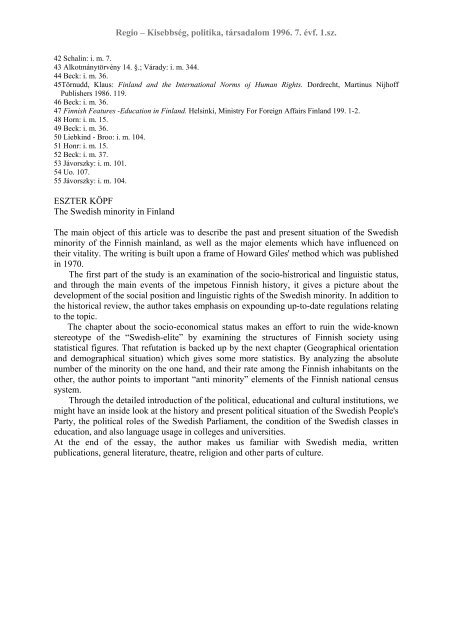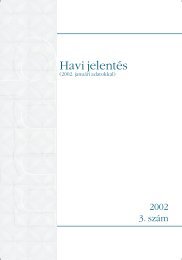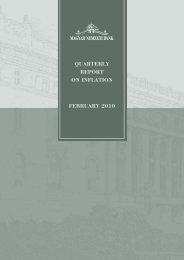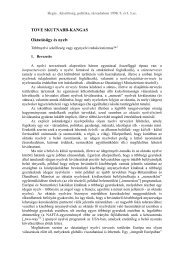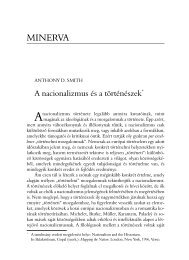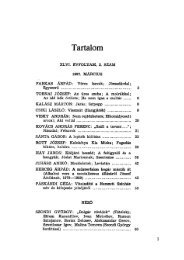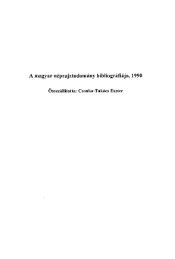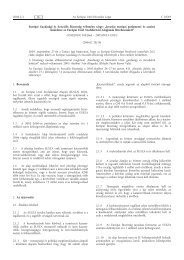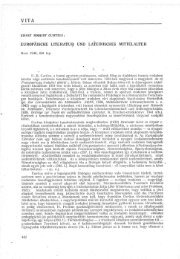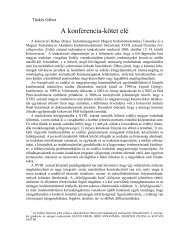Regio â Kisebbség, politika, társadalom 1996. 7. évf. 1.sz.
Regio â Kisebbség, politika, társadalom 1996. 7. évf. 1.sz.
Regio â Kisebbség, politika, társadalom 1996. 7. évf. 1.sz.
Create successful ePaper yourself
Turn your PDF publications into a flip-book with our unique Google optimized e-Paper software.
<strong>Regio</strong> – Kisebbség, <strong>politika</strong>, társadalom <strong>1996.</strong> <strong>7.</strong> évf. <strong>1.sz</strong>.<br />
42 Schalin: i. m. <strong>7.</strong><br />
43 Alkotmánytörvény 14. §.; Várady: i. m. 344.<br />
44 Beck: i. m. 36.<br />
45Törnudd, Klaus: Finland and the International Norms oj Human Rights. Dordrecht, Martinus Nijhoff<br />
Publishers 1986. 119.<br />
46 Beck: i. m. 36.<br />
47 Finnish Features -Education in Finland. Helsinki, Ministry For Foreign Affairs Finland 199. 1-2.<br />
48 Horn: i. m. 15.<br />
49 Beck: i. m. 36.<br />
50 Liebkind - Broo: i. m. 104.<br />
51 Honr: i. m. 15.<br />
52 Beck: i. m. 3<strong>7.</strong><br />
53 Jávorszky: i. m. 101.<br />
54 Uo. 10<strong>7.</strong><br />
55 Jávorszky: i. m. 104.<br />
ESZTER KÖPF<br />
The Swedish minority in Finland<br />
The main object of this article was to describe the past and present situation of the Swedish<br />
minority of the Finnish mainland, as well as the major elements which have influenced on<br />
their vitality. The writing is built upon a frame of Howard Giles' method which was published<br />
in 1970.<br />
The first part of the study is an examination of the socio-histrorical and linguistic status,<br />
and through the main events of the impetous Finnish history, it gives a picture about the<br />
development of the social position and linguistic rights of the Swedish minority. In addition to<br />
the historical review, the author takes emphasis on expounding up-to-date regulations relating<br />
to the topic.<br />
The chapter about the socio-economical status makes an effort to ruin the wide-known<br />
stereotype of the “Swedish-elite” by examining the structures of Finnish society using<br />
statistical figures. That refutation is backed up by the next chapter (Geographical orientation<br />
and demographical situation) which gives some more statistics. By analyzing the absolute<br />
number of the minority on the one hand, and their rate among the Finnish inhabitants on the<br />
other, the author points to important “anti minority” elements of the Finnish national census<br />
system.<br />
Through the detailed introduction of the political, educational and cultural institutions, we<br />
might have an inside look at the history and present political situation of the Swedish People's<br />
Party, the political roles of the Swedish Parliament, the condition of the Swedish classes in<br />
education, and also language usage in colleges and universities.<br />
At the end of the essay, the author makes us familiar with Swedish media, written<br />
publications, general literature, theatre, religion and other parts of culture.


